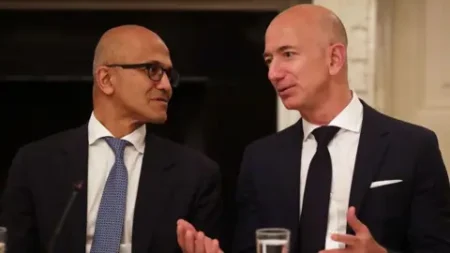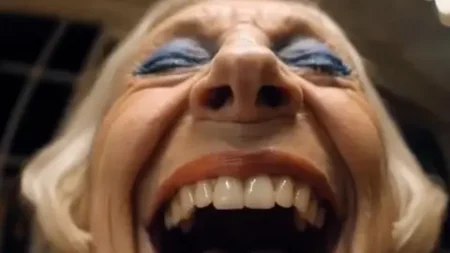In recent years, the issue of non-consensual, explicit deepfakes has emerged as a significant concern across various demographics, notably affecting public figures such as pop star Taylor Swift and political leaders like Rep. Alexandria Ocasio-Cortez, as well as countless high school girls nationwide. These deepfakes are digitally generated images where the faces of individuals are superimposed onto explicit bodies using artificial intelligence, creating a harmful and often humiliating form of digital harassment.
In response to mounting public pressure and advocacy against this troubling trend, the United States government is taking action to combat the dissemination of such non-consensual content. A federal law aimed at criminalizing the sharing of non-consensual, explicit images — whether they are real or computer-generated — is on the verge of being enacted. President Donald Trump is expected to sign the “Take It Down Act” during a ceremonial event at the White House, marking a significant step forward in the protection of individuals from these violations.
The Take It Down Act brings forth several important provisions. First, it makes it illegal to share non-consensual explicit imagery, thus rooting itself firmly against the troubling phenomenon of revenge porn and the sharing of AI-generated sexual content without consent. Furthermore, the legislation mandates that technology platforms must remove such images within 48 hours of receiving notification about their presence, thereby positioning greater accountability on the companies that host this content.
This newly introduced law not only strengthens protections for victims of digital harassment but also clarifies the responsibilities and liabilities of tech companies in managing such harmful materials. Historically, while there were restrictions on the creation and sharing of explicit images of minors, laws protecting adult victims varied significantly from state to state, leaving a patchwork of ineffective protections in place. The Take It Down Act is thus a pioneering measure aimed at addressing these discrepancies in federal law regarding adult victims of non-consensual explicit content.
As technology continues to advance, there exists a broader societal concern about the potential harms associated with AI-generated content. The Take It Down Act is indeed one of the first federal laws in the U.S. designed to confront the implications of AI usage in a practical way. Advocacy groups such as Public Citizen are recognizing that while AI technology has valuable applications, its misuse in creating non-consensual deepfakes poses a clear threat with no accompanying benefits.
The legislative journey of the Take It Down Act exemplifies a rare moment of bipartisan consensus within Congress, passing nearly unanimously with only two dissenting votes in the House. The support for this bill extended beyond lawmakers, garnering backing from over 100 organizations, including prominent tech companies such as Meta, TikTok, and Google, indicating a collective recognition of the pervasive issue at hand.
Notably, First Lady Melania Trump publicly advocated for the legislation, engaging with lawmakers to promote its passage. During a joint address to Congress, President Trump highlighted this bill, making it a priority for his administration. The motivations behind the legislation were underscored by personal stories, such as that of high school student Elliston Berry, who became a victim of a non-consensual deepfake created by a classmate. Her account, alongside similar experiences from young women across the country, underscores the urgent need for protective measures against digital harassment.
In light of recent developments, several major tech platforms have begun making strides to assist victims in removing non-consensual imagery from their sites. Companies like Google, Meta, and Snapchat have established procedures for users to request the removal of explicit images. Collaborations with non-profit organizations dedicated to combating digital abuse are also a growing trend, though inconsistencies in cooperation exist among different platforms.
Despite these advancements, the reality remains that individuals seeking to harm others may still exploit platforms that are less stringent in their policies against such conduct. The intent behind the Take It Down Act is to create a framework of legal accountability that compels tech companies to take proactive measures in safeguarding individuals from these violations.
Critics of the status quo have articulated their expectations for this legislation, highlighting the necessity for social media companies to fulfill their responsibility in protecting users from invasive breaches of privacy. This sentiment was echoed by leaders from advocacy groups emphasizing the importance of societal signals denouncing the acceptability of non-consensual explicit content. The Take It Down Act is poised to confront such unacceptable behaviors, establishing clear consequences for offenders and collectively fostering a safer online environment.
In conclusion, the recent legislative action marks a crucial turning point in the effort to combat the alarming rise of non-consensual explicit imagery facilitated by AI technology. The Take It Down Act not only symbolizes an important victory for advocates and victims but also sends a strong message about the collective societal commitment to upholding the rights and dignity of individuals in an increasingly digital world. As discussions around AI and its ethical implications continue to evolve, this legislation serves as a foundational step in addressing the challenges posed by technology misuse, paving the way for further protective measures in the future.











